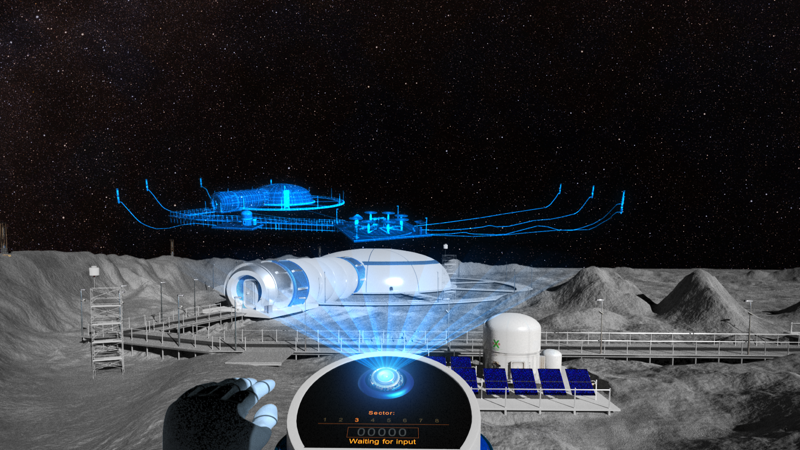
Our Living Climate
See how the Earth's climate changes with the passage of time.
This curriculum-aligned Planetarium show presents a dramatic and different way of looking at climate and climate change.
Exploring the Earth over millions of years, we discover a climate that is constantly changing. Sometimes the changes are gentle and at other times catastrophic. This show looks at the delicate balance that makes life on Earth possible and sets our planet apart from other worlds in the solar system.
Students will experience
- A fulldome Planetarium experience in reclining seats.
- The visually spectacular story of how the climate developed on a global scale, and has changed over time.
- An exploration of how life across the ages has impacted Earth's climate.
- How Earth's living climate sets it apart from the harsh environments of Earth's neighbours - Mercury, Venus, Mars and the Moon.
- A 10-minute live guided tour of the night sky.
Students will learn
- About the development of climate on Earth.
- About the ways that the climate and Earth has been endlessly transformed by weather patterns, ice ages, and new life forms.
- About the impacts of human action on the climate and how scientists measure and detect those changes.
- About the importance of the atmosphere and oceans for life on Earth.
Related links
- Teacher notes – Our Living Climate (PDF 176KB)| 176.78 KB .pdf file
- Activity 1: Climate timeline (PDF 70KB)| 73.17 KB .pdf file
- Activity 2: Rainfall, weather & climate (PDF 79KB)| 78.31 KB .pdf file
- Activity 3: Make your own greenhouse (PDF 68KB)| 67.14 KB .pdf file
- Activity 4: Seasons on other planets (PDF 56KB)| 55.48 KB .pdf file
- Activity 5: Life on Mars versus life on Earth (PDF 53KB)| 52.42 KB .pdf file
- Activity 6: Wish you were here (PDF 80KB)| 79.72 KB .pdf file
- Planetarium
Availability
Terms 1 & 4, Monday to Friday
Duration: 45 minutes
Student information
Years 5 to 10
Minimum 15 students
Maximum 150 students
Bookings
Planetarium
Screening with presenter led tour of the night sky
Victorian Curriculum Links
Science: Levels 5 and 6
Biological sciences
- habitats can be described by their physical conditions; changing the physical conditions of a habitat, including by human activity, may affect the growth and survival of organisms (VC2S6U01)
- organisms have evolved over time, as seen in fossils and scientific records; the structural features and behaviours of living organisms enable them to thrive in their environments (VC2S6U02)
Earth and space sciences
- geological processes including weathering, erosion, transportation and deposition can cause slow or rapid changes to Earth’s surface (VC2S6U05)
- sudden geological changes or extreme weather conditions can affect Earth’s surface and atmosphere; the impacts of natural hazards, including earthquakes, volcanic eruptions, wildfires and floods, can be reduced by human actions and technological innovations (VC2S6U06)
Science: Levels 7 and 8
Use and influence of science
-
proposed scientific responses to socio-scientific issues impact on society and may involve ethical, environmental, social and economic considerations (VC2S8H03)
Biological sciences
-
matter and energy flow through ecosystems and can be represented using models, including food webs and food pyramids; populations will be affected by changing biotic and abiotic factors in an ecosystem including habitat loss, climate change, seasonal migration and introduction or removal of species (VC2S8U04)
Science: Levels 9 and 10
Use and influence of science
-
the use of scientific knowledge to address socio-scientific issues and shape a more sustainable future for humans and the environment may have diverse projected outcomes that affect the extent to which scientific knowledge and practices are adopted more broadly by society (VC2S10H03)
Biological sciences
-
the theory of evolution by natural selection includes the processes of variation, isolation and adaptation and is supported by evidence including the fossil record, biogeography and comparative embryology; the theory explains past and present biodiversity and demonstrates how all organisms have some degree of relatedness to each other
(VC2S10U05)
Earth and space sciences
- carbon is cycled on Earth through key processes including photosynthesis, respiration, fire, weathering, vulcanism and the combustion of fossil fuels; these processes change the composition of Earth’s interrelated systems (atmosphere, biosphere, hydrosphere and lithosphere) over time (VC2S10U10)
- the dynamics of global climate change can be modelled and explained by examining the interactions between greenhouse gas emissions and energy exchanges within and between Earth’s systems; mitigating human-induced climate change requires addressing various activities including power generation, deforestation, manufacturing, transportation, food production and resource consumption (VC2S10U11)
Accessibility
Please view our accessibility page for general information. Contact our team on 13 11 02 or email us at [email protected] to discuss how we can support your visit.
Museums Victoria Learning Access Fund
The Museums Victoria Learning Access Fund aims to enhance access to our museums (Melbourne Museum, Scienceworks and Immigration Museum), programs and events by offering free or subsidised education programs for eligible schools. Find out more about the fund.

Sign-up to Museum Teachers
Subscribe and get special offers, teacher news and free entry to all museums.












